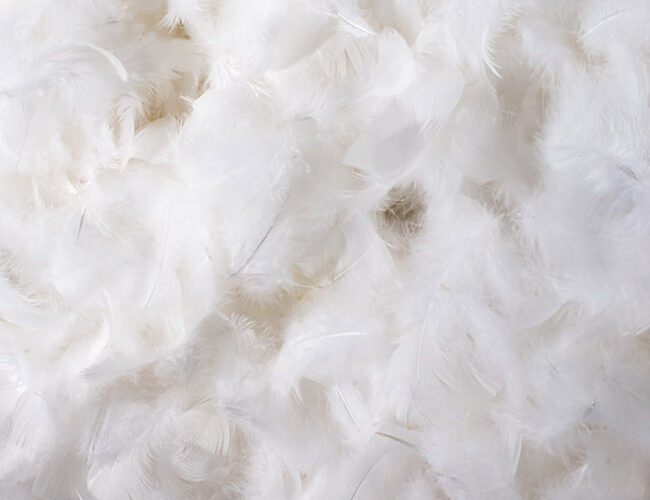COLOR SEPARATION EXPLANATION OF WHITE DOWN AND FEATHERS

What is an acceptable percentage of dark material in a "white" product?
Government and Other Industry Standards
Currently, we find no official government standards that explicitly describe the tolerance for dark material in a white feather or down sample.
In the USA, a general rule for textile tolerance is 3% (see FTC's "Threading Your Way Though the Labeling Requirements Under the Textile and Wool Acts.", Page 20). In Europe, a firm standard does not exist. Japanese requirements, however, are very strict (sometimes less than 1%).
Some companies have adopted their own tolerance level anywhere from 0% to 5%.
Procedure for determining Percentage Dark vs. White Material.
Four grams of material are placed in a separating cabinet. All feathers, down, fiber, etc. are separated into two beakers -- WHITE and DARK. The material in each beaker is weighed and a percentage of each component is calculated. In some cases, one might separate the light gray/yellow material into a third beaker. (Light coloring may be acceptable for dark fabrics.)
What about a color separation for grey down.
In most cases, a simple declaration of actual color is all that is needed for a grey down sample. However, in some cases it may be necessary to determine the exact % of white in a gray sample.
The Dilemma of a fixed "Dark" Material Tolerance.
The range of dark material is wide and may consist of one or more of the following:
Off-White
Slightly Yellow
Light Grey
Light Brown
Dark Brown
Dark Grey
Black
Other Dark Colors
The effect of dark material to the consumer depends on the fabric shell:
- High amounts of dark material in colored shells would not be noticeable.
- In a heavy white fabric, 3% or more of light gray down might be acceptable.
However, 1% - 2% of very dark or black feathers might be a problem.
- Just 1% of grey in a very light or transparent fabric might cause a problem.
Some buyers have a 0% tolerance. For such buyers even off-white color is not acceptable. (Down processors will sometimes use optical brighteners and other methods to improve the "whiteness" of the products.)
Solutions and Recommendations for the “color” issue.
In most cases, the vendor and buyer must agree on the allowed tolerance for each purchase. This will depend on the fabric shell, price, product type, and other factors.
A general maximum allowable tolerance (perhaps 3%) should be adopted to prevent gross misrepresentations of "white" down or feathers. However, in many cases, the vendor and buyer will agree on a stricter tolerance and may also need to agree on definitions of "white" and "dark" feathers or down for specific products.
